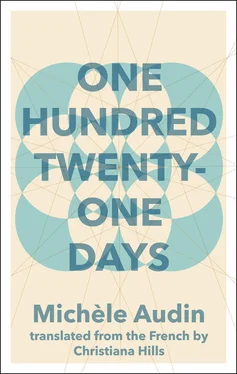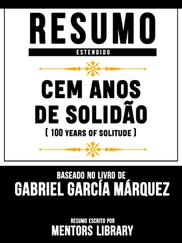(Le Petit Parisien, November 12, 1920)
The coffin of the “Unknown Soldier,” placed on a cannon, preceded by the chariot carrying Gambetta’s heart, arrived at the Arc de Triomphe yesterday.
DID YOU SEE THE ECLIPSE?
(Le Petit Parisien, April 9, 1921)
The extreme clarity of the atmosphere allowed curious amateur astronomers to contemplate yesterday’s solar eclipse in all its beauty. The classic method? Good old cheap smoked glass.

PIERRE MEYER (interview, December 18, 2006, cont.). She felt a tremendous amount of compassion for her husband. His injury caused him to suffer for his entire life. He must have not been very easy to live with. Terrible temper. And that huge household she had to look after, six children! They were very close in age: the youngest, Ignace, was born in 1924. They named him after Mortaufs’s brother, who was killed in 1918. Such an atrocious war…
It was at that time, when Ignace was born, that they bought the house in Chatou. Marguerite had a personal fortune, and Mortaufs was earning a good amount of money, with all those courses he was teaching in various places.

ANNOUNCEMENTS
(Le Figaro, October 24, 1922)
The professor Christian Mortaufs
and Madame,
née Marguerite Janvier,
announce the birth
on October 18, 1922, of
BERNADETTE MARIE BAPTISTINE
The baptism will take place
on Tuesday at 10 o’clock in the morning
at the Church of Saint-Philippe-du-Roule
22, Rue d’Artois, Paris, 8th arr.
—
Claude Duvivier
lawyer at the Paris Bar,
and his wife Nicole,
née Gorenstein,
have the joy of announcing
the birth of their daughter
MIREILLE ANNE
on October 17, 1922
9, Rue de Médicis, Paris, 6th arr.
THE CLIMB TO THE PANTHÉON
(Le Petit Parisien, November 23, 1924)
The final arrangements for the ceremony marking the transfer of Jean Jaurès’s ashes to the Panthéon began yesterday and were completed that very night. This morning, everything will be ready.
LAWS OF POPULATION FLUCTUATION OF SEVERAL COEXISTING SPECIES IN THE SAME AREA
BY V. VOLTERRA
(French Association for the Advancement of the Sciences, Lyon, 1926)
Let there be two species (of animals, for example). The first gets its food from its natural habitat, and, if it were alone, would grow exponentially. The second does not find food in its natural habitat, and, if it were alone, would decrease exponentially. If the second species were to eat the first, what would happen? […] The fluctuations of the number of individuals of each species are thus periodic. […]
Let us suppose some animals in each species are destroyed (by fishing). […] We see that, when the intensity of fishing grows, the number of individuals in the first species grows and the number in the second decreases, which is to say that fishing, as verified by statistics from the Adriatic, has a favorable effect before, during, and after the war.
ELECTROCUTED! A SCIENTIFIC KILLING…
(L’Humanité, special edition, August 23, 1927)
Boston, August 23, 12:30 a.m. local time. How to burn a man in an electric chair.
Madeiros was put in the chair at 12:02. He died at 12:09. Sacco was placed in the electric chair at 12:11. He died at 12:19. Vanzetti was put in the chair at 12:20. He died at 12:26.
This is not a judicial error. It is an “example.”
For the proletariat, it’s an open declaration of war!
THE G. CASE
BY J. MEYERBEER, PSYCHIATRIC DOCTOR, SAINT-MAURICE HOSPITAL
(French Review of Psychiatric Medicine, Vol. 11, 1930)
Twelve years later, we return to the case of G., a former polytechnician who injured his head in combat, and who was hospitalized after having murdered his aunt, his sister, and his uncle. We refer back to our article in the Gaz. Assoc. Psy. Doc. Fr. (Vol. 28, 1920).
As we then reported, G. is a calm patient who is well-liked by the staff. In this short note, we revisit his relations with the outside world.
FAMILY SITUATION
G.’s oldest sister — who during the first few years visited him regularly and brought him newspapers, and, depending on the season, fruit, cakes, or chocolate — stopped visiting when she gave birth to a baby girl. Apart from the fact that the Saint-Maurice Hospital is not a place for a child, G.’s brother-in-law, a lawyer, thought that her visits could be dangerous for the little girl and thus for her mother as well. She has therefore replaced the visits with regular written correspondence. G. kindly replies to all of her letters.
CURRENT EVENTS
Apart from the epistolary exchanges with his sister, G. maintains extensive scientific correspondence with several mathematicians. He also receives periodical mathematics journals and monthly newsletters.
During our interviews, he never fails to comment on the events he knows something about. His analyses are sometimes surprising in their acuity. Of this we will give but one example, that of the transfer of Jean Jaurès’s remains to the Pantheon (in 1924), which he told us represented a change of mentality, since this act established Jaurès as the war’s first victim.
MATHEMATICS
We sometimes think it quite a shame that G. cannot teach mathematics, because he possesses remarkable teaching abilities, which he only has the chance to show during our interviews. We view as evidence the way he summarized an article he was reading on sardine fishing. Here are a few lines from the notes we took during this particular interview:
“Look at this, Doctor Meyerbeer, during the war, there was less fishing in the Mediterranean, of course, but in what they were catching, there were more and more sharks, in proportion, you see? Well, there’s an Italian scholar who explains this with differential equations. And he proves that, the more sardines are fished, the more sardines there are in the sea.”
We must confess that we have learned more about mathematics over the course of observing this patient’s behavior than we did at school.
We should add that G.’s skill as a mathematician is recognized among the experts in the field. He summarizes the results of his research in articles that he then sends to specialized journals, which publish them. His articles appear to be read and used, because they are cited by several mathematicians in other articles that G. has showed us. In one of these articles, his name is associated with a theorem, “G.’s theorem”; another uses “G.’s constant.” Students have even defended dissertations in which they have answered questions raised by G. in his work. He keeps us informed on the day-to-day progress of his research and mathematics in general.
We asked him if he would like to meet his mathematician correspondents — which we would have considered beneficial for this patient who has no real contact with the world — but he calmly refused, asserting his desire for peace and quiet.
THE PROBLEM OF THE TWO RACES
BY R. VON MISES, ISTANBUL
(Matematicheskii Sbornik, Moscow, 1934)
The example that follows is, by its very subject, of particular interest.
In a country in Europe whose inhabitants number around 65 million, the population is composed of two races A and B , with respective figures of 0.9 % and 99.1 %. A very small number of these inhabitants perform scientific research in physics or chemistry. No absolute scale to measure scientific capacity exists. It is generally accepted that the winners of the Nobel Prize form a set of the highest values with this capacity. The list of winners from the years 1901 to 1933 includes 27 names from said county, of which 5 belong to race A.
Читать дальше













